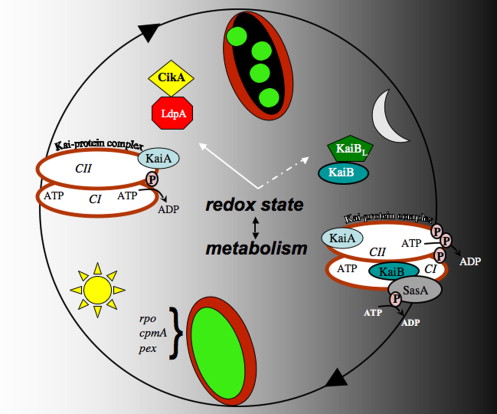
Life on the Edge: Antarctic Soils Flourish with Microbial Collaboration
Antarctica, the frozen core of our planet, is frequently labeled as a barren wasteland—an unyielding domain of harsh winds, icy temperatures, and nearly nonexistent nutrients. Yet a revolutionary new study overturns this perspective, uncovering that beneath the exterior of the world’s coldest continent lies a vibrant realm of microbial existence, abundant in diversity and tenacity. These revelations, published in the journal Frontiers in Microbiology, shed light on the concealed vitality of Antarctic soils and carry significant implications for our comprehension of life in extreme settings—on Earth and beyond.
Biodiversity in the Most Unexpected Places
Guided by Dr. Dirk Wagner from the GFZ Helmholtz Centre for Geosciences, a group of German researchers explored East Antarctica’s Larsemann Hills to investigate soil ecosystems adjacent to a receding glacier. Employing advanced DNA sequencing methods, they not only documented the current microbial inhabitants but also differentiated between living organisms and those that had long since died—an important methodological enhancement that offered a glimpse into both the present state and a record of biological history.
In spite of the region’s severe aridity, seemingly sterile appearance, and scant organic material, the researchers were astonished to find a remarkable 2,829 genetically distinct species flourishing in these sparse soils. Rather than being mere passive entities, these microorganisms actively engage in intricate networks, forming alliances that challenge previous notions of how life can exist—and even prosper—in frigid wilderness.
“The magnitude of microbial diversity we observed was utterly unexpected,” remarked Dr. Wagner. “Even in such nutrient-scarce and hostile soils, life not only survives; it collaborates.”
Thriving Through Collaboration
One of the study’s most unexpected results was the degree to which cooperation—not rivalry—acts as the impetus behind survival in Antarctica’s microbial community. Rather than competing for limited resources, different species appeared to unite to conquer environmental challenges.
For instance, bacteria were discovered in partnership with green algae, likely aiding in the exchange of vital nutrients necessary for their survival. Likewise, particular species of fungi and actinobacteria cohabitated in ways that suggested mutual benefits—fungi decomposing complex organic materials and providing carbon for bacteria.
These cooperative tactics resonate with ecological insights observed over a hundred years ago by Russian naturalist and geographer Prince Peter Kropotkin. In his seminal work Mutual Aid: A Factor of Evolution, Kropotkin contested the Darwinian focus on competition, positing that in extreme environments like Siberia, collaboration becomes vital for survival. These new Antarctic revelations provide a microbial-scale validation of that concept.
Mapping the Soil Colonization Journey
By collecting soil samples from various locations radiating away from the glacier’s periphery, Wagner’s team effectively constructed a timeline of ecological succession. Close to the glacier, “pioneer” organisms such as cold-adapted fungi prevailed. These fungi initiate the soil formation process by breaking down minerals and organic material. As time progressed—and distance from the glacier increased—more intricate and layered microbial communities emerged.
Topsoil layers, exposed to sunlight and air, exhibited the highest diversity of life, while deeper soils—although less populated—still contained highly specialized organisms capable of surviving in darkness and ice. This natural experimental setting of ecological evolution provides crucial insights into how desolate landscapes gradually come to life.
Living Versus Historical Microbial Signatures
A technological innovation that facilitated these findings was the ability to distinguish intracellular DNA (iDNA) from extracellular DNA (eDNA). In simple terms, iDNA is derived from presently living organisms, whereas eDNA serves as a molecular fossil, indicating past life.
This dual analysis uncovered that nearly 40% of the identified species were represented solely by eDNA, highlighting how communities have adapted over time in response to climatic changes and glacial movements. The researchers also observed that bacterial diversity vastly outnumbered that of eukaryotes (organisms with complex cells), with a ratio exceeding 10 to 1.
Wider Implications: Redefining Life’s Guidelines
The existence of such dynamic microbial networks in Antarctica challenges and broadens many established models. Here are some of the broader ramifications:
1. Reevaluating Biodiversity in Extreme Habitats
– These findings imply that Antarctica may possess significantly more biodiversity than previously believed. Soil ecosystems once dismissed as barren might be reservoirs of undetected life.
2. Microbial Collaboration as an Evolutionary Driver
– Symbiotic relationships among bacteria, algae, fungi, and other microorganisms illustrate that mutualism is not only achievable in extreme conditions—it may be critical.
3. Natural Laboratory for Planetary Research
– Antarctica’s dry, icy, and nutrient-sparse soils closely mimic conditions on Mars and the Moon. Gaining insight into how microbial life exists and collaborates here can influence the search for life beyond Earth.
4. Adapting to a Changing Climate
– As polar ice recedes due to global warming, new terrains emerge. Understanding how